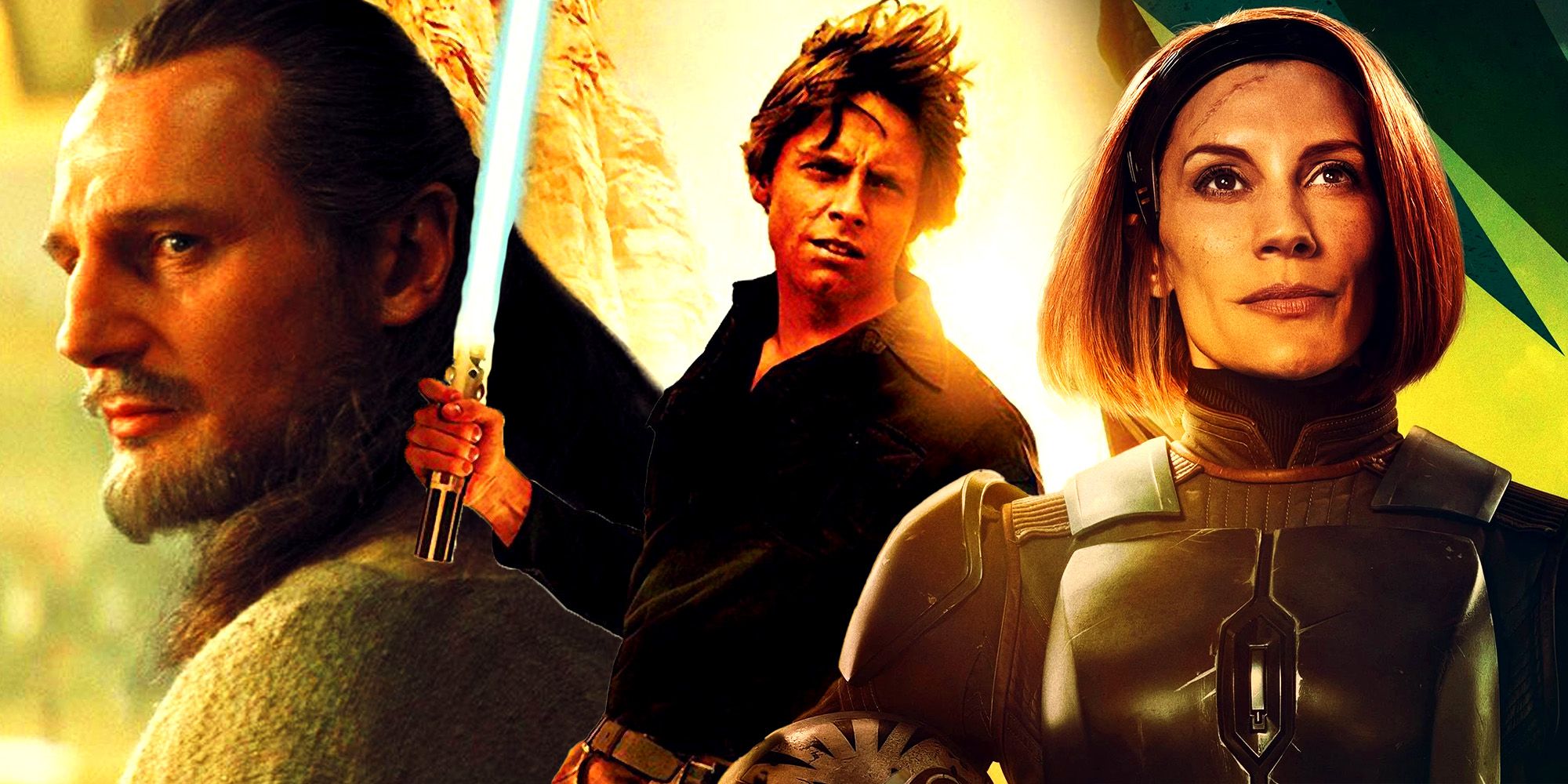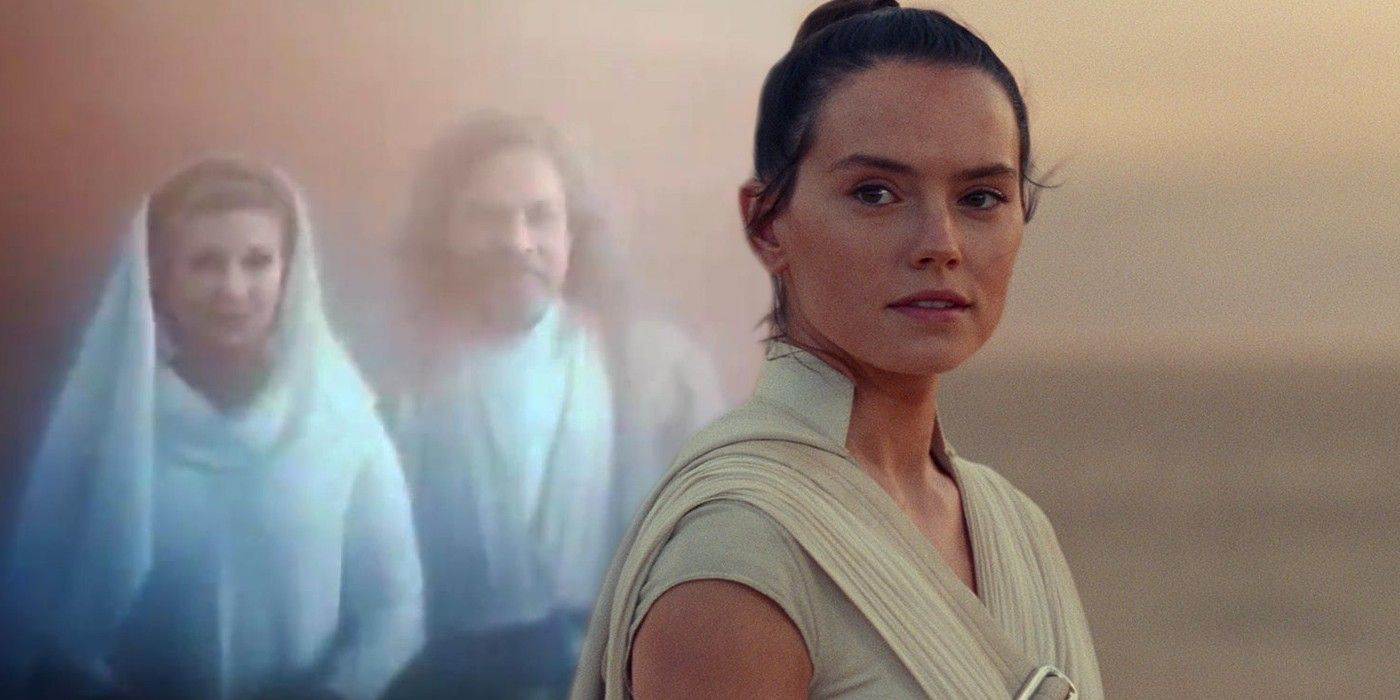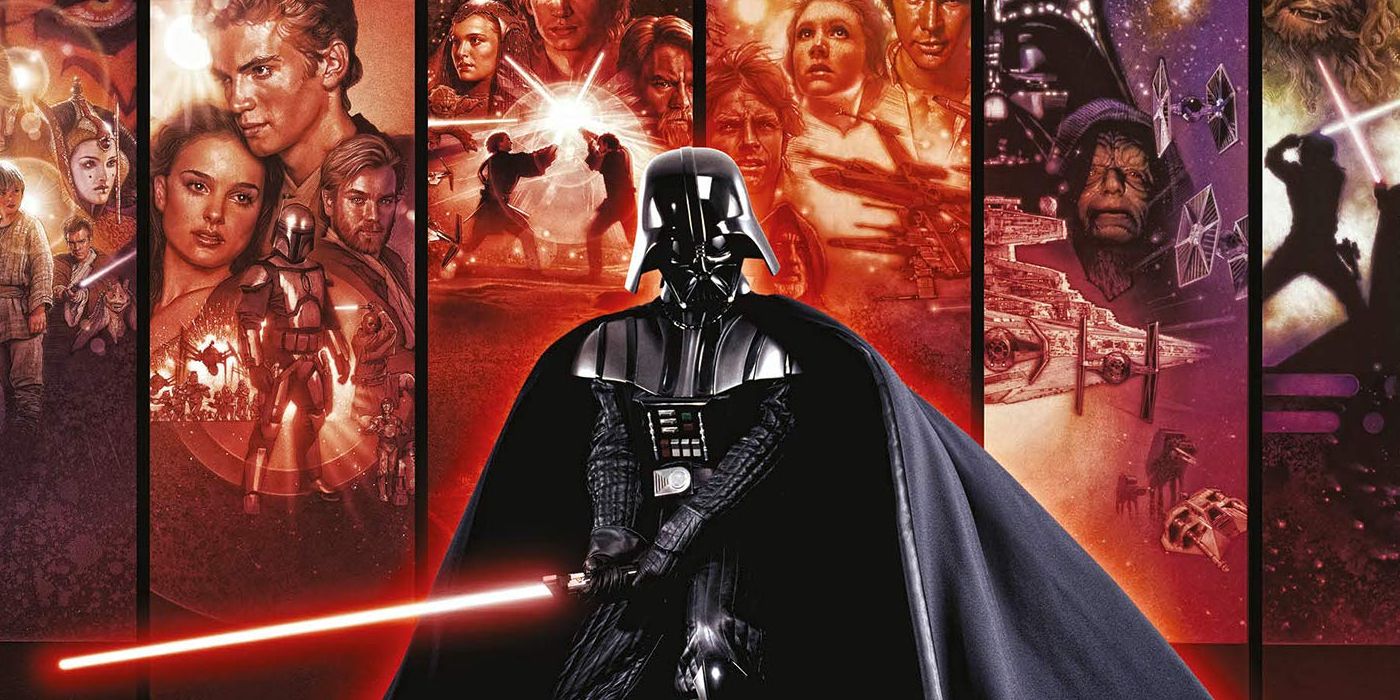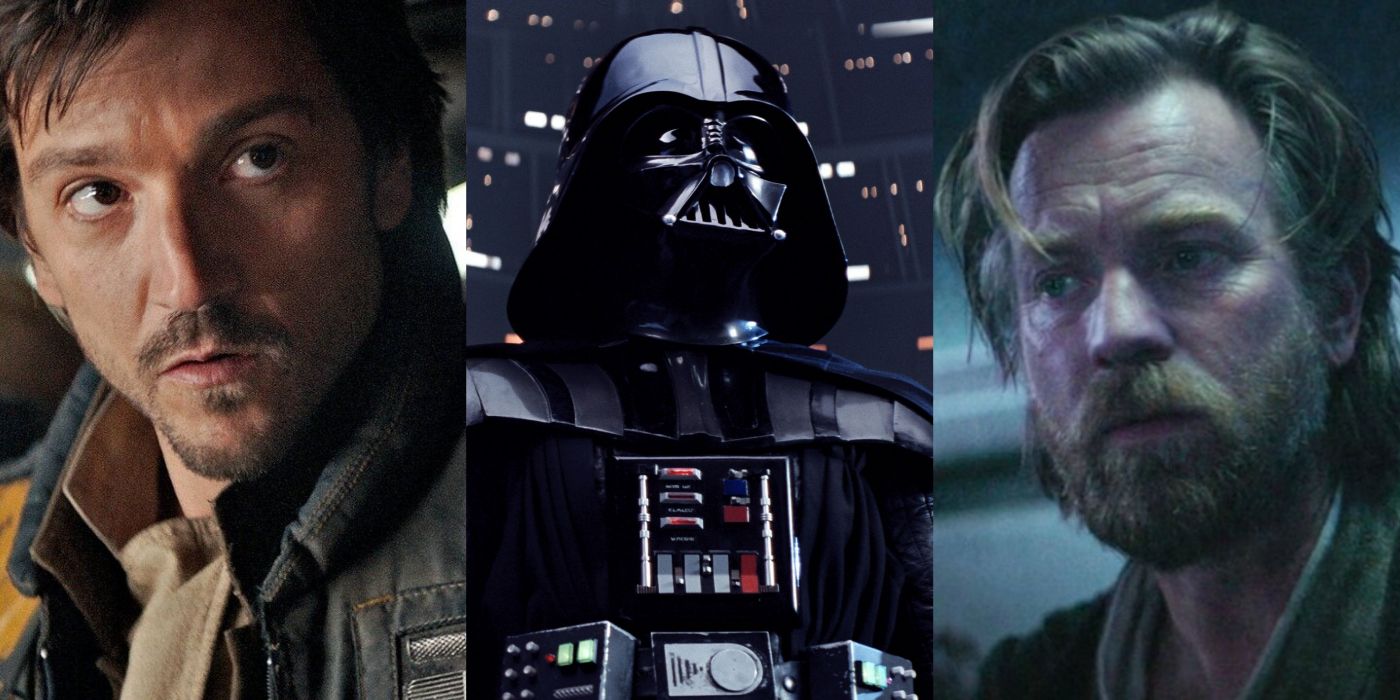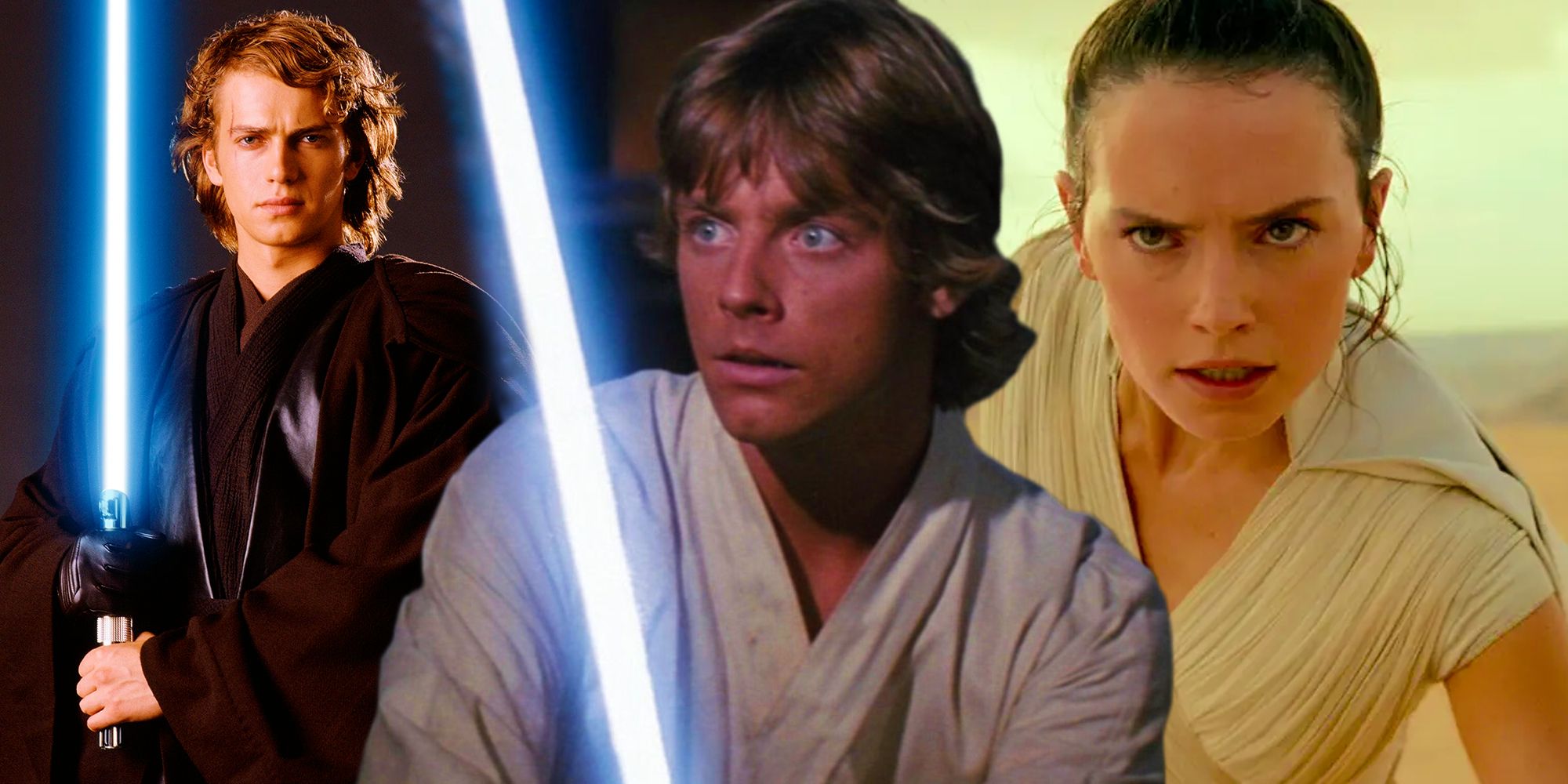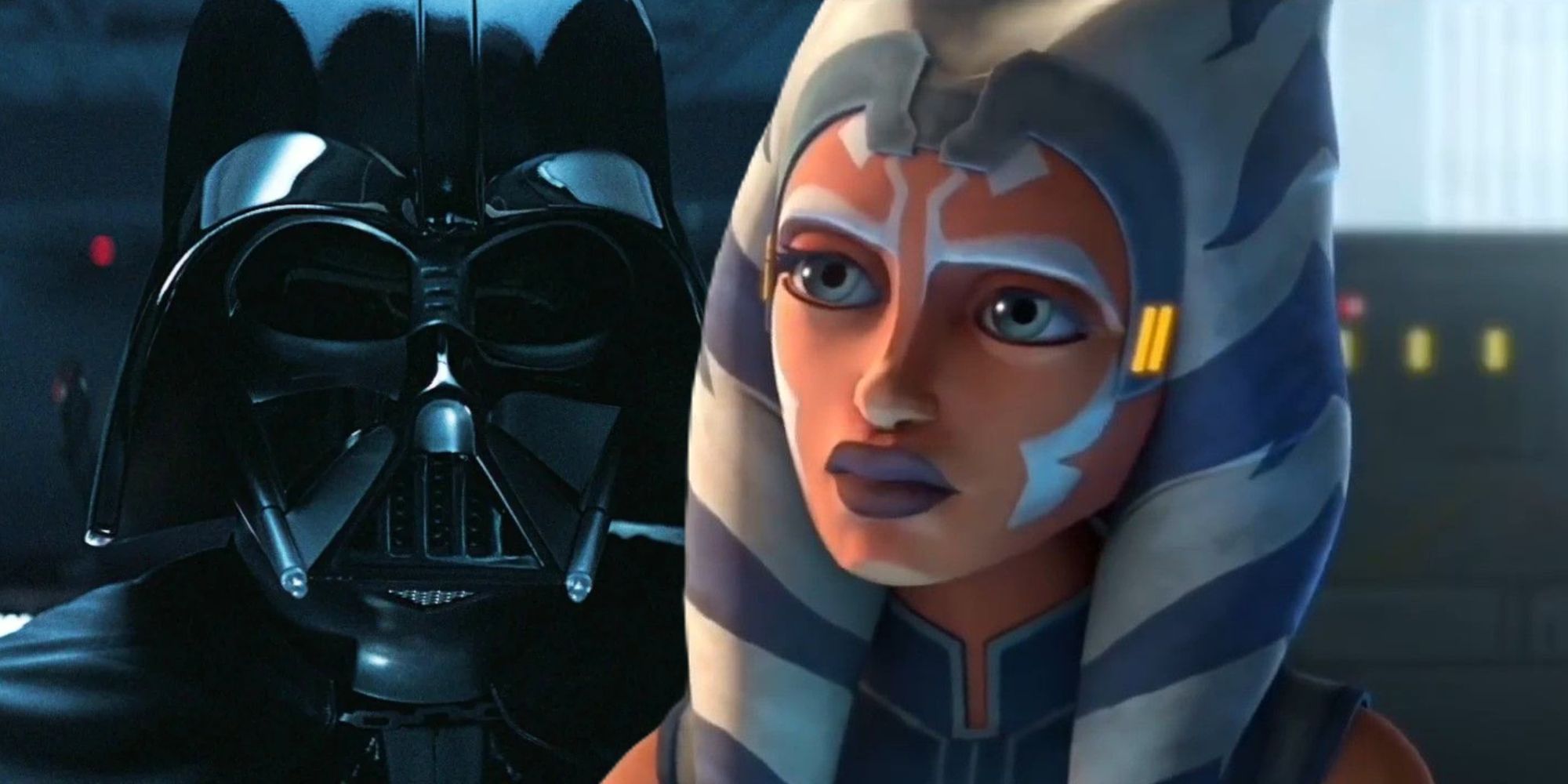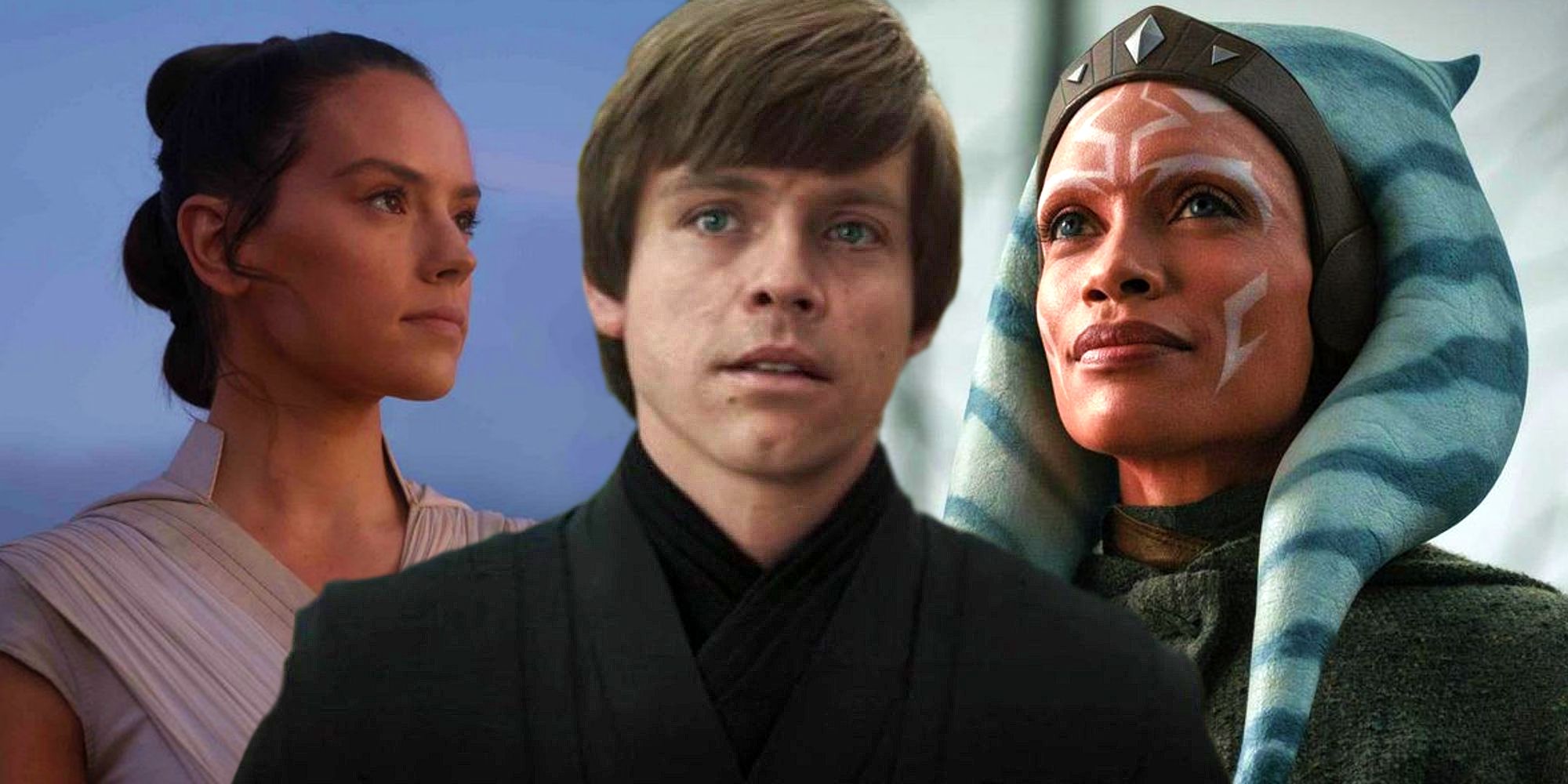Quick Links
Here's the best way to watch all the Star Wars movies in order. There's a sense in which Star Wars has always been told out of order; the opening crawl for The Empire Strikes Back introduced the idea it was actually "Episode V," confirming George Lucas had dropped viewers in partway through the story he intended to tell. He wrapped up the original trilogy, and only returned to tell the prequels decades later. Lucas set a pattern that Star Wars has stuck to ever since, with movies and TV shows hopping around the timeline with impunity.
This, naturally, means everyone has their own opinion on the best way to watch Star Wars in order. Mark Hamill prefers a viewing order based on release order, for example, while others tend to choose an in-universe chronological order. There's even more debate over whether to integrate the ever-expanding range of Star Wars TV shows into the mix. Here's the best way to watch Star Wars.
The Best Star Wars Viewing Order
The best Star Wars viewing order is a little more creative, though. In 2011, Rod Hilton proposed the so-called "Machete Order." This was an innovative attempt to create a viewing order that preserved the sense of surprise in many original trilogy twists, notably the revelation that Luke Skywalker is Anakin's son. The Machete Order was flawed from the outset; Hilton had no love for Star Wars: Episode I - The Phantom Menace, and so he skipped it, even though it's an essential part of the saga. But the best Star Wars viewing order nonetheless borrows from this - and goes a step further, integrating the sequel trilogy and Lucasfilm's anthology films.
- Rogue One: A Star Wars Story (2016)
- Star Wars (1977)
- The Empire Strikes Back (1980)
- Star Wars: Episode I - The Phantom Menace (1999)
- Star Wars: Episode II - Attack of the Clones (2002)
- Star Wars: Episode III - Revenge of the Sith (2005)
- Return of the Jedi (1983)
- Solo: A Star Wars Story (2018)
- Star Wars: The Force Awakens (2015)
- Star Wars: The Last Jedi (2017)
- Star Wars: The Rise of Skywalker (2019)
Pros: This Star Wars viewing order uses Rogue One: A Star Wars Story as a prologue, setting up the Death Star and Darth Vader. It is only after The Empire Strikes Back's revelations that it reveals Darth Vader was telling the truth, and the parallels between Anakin and Luke add narrative suspense to Return of the Jedi. George Lucas always claimed Star Wars is like poetry, in that it rhymes. This Star Wars viewing order helps reveal the rhyme scheme, allowing viewers to spot the patterns. Solo: A Star Wars Story is used as a palette-cleanser after the original trilogy, before moving into the sequels.
Cons: The main problem with this Star Wars viewing order is the loss of momentum after The Empire Strikes Back. While most of the reveals are preserved, there is one that loses all sense of surprise; Leia's relationship to Luke is revealed in the final scenes of Star Wars: Episode III - Revenge of the Sith. The placement of Solo: A Star Wars Story feels a little arbitrary, but nonetheless works in ensuring viewers have as strong a link to Han Solo as possible before Star Wars: The Force Awakens.
How To Watch Star Wars Movies In Release Order
Mark Hamill's recommended viewing order is release order. This means viewers will begin with the Star Wars original trilogy, before stepping back in time for the prequels, and finally heading to the more recent sequel trilogy. This Star Wars viewing order has the benefit of preserving the sense of surprise around specific revelations, simulating the reactions of the original audience. The anthology movies Rogue One: A Star Wars Story and Solo: A Star Wars Story both present valuable backstory on the ideas and characters in the original trilogy.
- Star Wars (1977)
- The Empire Strikes Back (1980)
- Return of the Jedi (1983)
- Star Wars: Episode I - The Phantom Menace (1999)
- Star Wars: Episode II - Attack of the Clones (2002)
- Star Wars: Episode III - Revenge of the Sith (2005)
- Star Wars: The Force Awakens (2015)
- Rogue One: A Star Wars Story (2016)
- Star Wars: The Last Jedi (2017)
- Solo: A Star Wars Story (2018)
- Star Wars: The Rise of Skywalker (2019)
Pros: There's a reason Mark Hamill prefers watching Star Wars by release order; it's simple and effective. It preserves many of the key twists, so anyone watching this who's not already spoiled on major twists will be taken aback when they happen.
Cons: Watching Star Wars in release order can be a little frustrating, simply because the story tends to jump around the timeline quite a bit. It's clearly not how George Lucas himself intended it, given he views the prequels as the first three chapters of his saga. More recent releases become even more difficult to navigate, with the sequels interspersed with fairly random steps back in time.
How To Watch Star Wars Movies & TV Shows In Release Order
It's a rather more challenging task to watch Star Wars movies and TV shows in release order, of course, simply because the franchise is ever-expanding. Still, some viewers may choose to take this approach, integrating the movies and TV shows into a single viewing experience. For the sake of conciseness, this list tends to group TV shows together - excepting recent Disney+ TV shows set during The Mandalorian era, where individual series are intertwining a lot more.
- Star Wars (1977)
- The Empire Strikes Back (1980)
- Return of the Jedi (1983)
- Star Wars: Episode I - The Phantom Menace (1999)
- Star Wars: Episode II - Attack of the Clones (2002)
- Star Wars: Episode III - Revenge of the Sith (2005)
- Star Wars: The Clone Wars (2008)
- Star Wars: The Clone Wars Seasons 1-7 (2008-2020)
- Star Wars Rebels (2014-2018)
- Star Wars: The Force Awakens (2015)
- Rogue One: A Star Wars Story (2016)
- Star Wars: The Last Jedi (2017)
- Solo: A Star Wars Story (2018)
- Star Wars Resistance (2018-2020)
- Star Wars: The Rise of Skywalker (2019)
- The Mandalorian seasons 1 and 2 (2020)
- Star Wars: The Bad Batch (2021-)
- The Book of Boba Fett (2021)
- Obi-Wan Kenobi (2022)
- Andor (2022-)
- Star Wars: Tales of the Jedi (2022-)
- The Mandalorian season 3 (2023)
- Young Jedi Adventures (2023)
- Ahsoka (2023)
Pros: Following this pattern allows a viewer to experience the Star Wars franchise as it evolves, with characters and themes developing in a fascinating way. It's possible to trace the development of the different characters and concepts in play, understanding how writers, directors, and showrunners drew inspiration from previous chapters to create their latest tale.
Cons: This is one of the most complicated ways to watch Star Wars, and it's quite easy to lose any sense of narrative focus. It will only become more complex as Star Wars continues to expand, with multiple movies and TV shows releasing every year. Matters aren't helped by the fact the various shows set in The Mandalorian era are tying together, because it will be increasing difficult to keep track of what is and what is not part of that narrative.
How To Watch Star Wars In Chronological Order
Alternatively, some viewers choose to watch Star Wars in chronological order. The Star Wars timeline tends to focus on the Battle of Yavin, dating events either "BBY" (Before Battle of Yavin") or "ABY" ("After Battle of Yavin"). This viewing experience is very different, giving a sense of the passage of time and the growth of characters and concepts in the Star Wars galaxy. There are fewer surprise twists in the original trilogy, but the context means the individual scenes resonate powerfully all the same.
Star Wars Movies’ Timeline
For those who only want to watch the Star Wars movies without getting into several shows, viewing the films in chronological order works. There will always be a debate on how Star Wars should be watched – chronologically or by release. That said, considering that most people are already familiar with the biggest reveals from the original Star Wars trilogy, watching Star Wars chronologically may not be a problem in terms of “spoiling” things. Disney’s Star Wars spinoffs, Solo and Rogue One, must also be considered in the Star Wars chronological viewing order.
- Star Wars: Episode I - The Phantom Menace (32 BBY)
- Star Wars: Episode II - Attack of the Clones (22 BBY)
- Star Wars: Episode III - Revenge of the Sith (19 BBY)
- Solo: A Star Wars Story (13 BBY - 10 BBY)
- Rogue One: A Star Wars Story (0 BBY)
- A New Hope (0 BBY)
- The Empire Strikes Back (3 ABY)
- Return of the Jedi (4 ABY)
- Star Wars: The Force Awakens (34 ABY)
- Star Wars: The Last Jedi (34 ABY)
- Star Wars: The Rise of Skywalker (35 ABY)
The chronological Star Wars watching order begins with Anakin Skywalker on Tatooine and covers George Lucas’ prequel trilogy before it gets into the Disney-era Star Wars spinoffs. Both Solo and Rogue One are set between the prequels and the original trilogy, with Rogue One’s ending leading directly into A New Hope. The original Star Wars trilogy ends with Return of the Jedi and is followed by The Force Awakens, the first of Disney’s Star Wars sequels. The Star Wars sequel trilogy concludes with The Rise of Skywalker, currently the final Star Wars movie both chronologically and by release.
Star Wars TV Shows’ Timeline
Except for the first three Tales of the Jedi episodes, which all take place before The Phantom Menace, all Star Wars TV shows happen during and/or between two Star Wars movies. As such, watching the Star Wars TV shows in chronological order without checking the films can be a bit confusing. However, for those who are already familiar with Star Wars and plan on catching up with the TV shows, the chronological order works perfectly fine. Disney’s Star Wars shows make up the majority of Star Wars’ canon TV shows, which includes both live-action and animated productions.
It's important to note George Lucas' Star Wars: The Clone Wars followed an anthology structure, meaning the episodes were told out of order. Viewers who want to follow those particular stories in order will need to refer to a guide on how to watch the Clone Wars in chronological order, which is outside the remit of this particular piece. Still, with that exception, here's a guide on Star Wars in chronological order.
- Young Jedi Adventures (approx. 200 BBY)
- Star Wars: Tales of the Jedi season 1, episodes 1-3 (68 BBY-32 BBY)
- Star Wars: Tales of the Jedi season 1, episode 4 (32 BBY)
- Star Wars: Tales of the Jedi season 1, episode 5 (22 BBY)
- Star Wars: The Clone Wars (22 BBY-19 BBY)
- Star Wars: Tales of the Jedi season 1, episode 6 (19 BBY)
- Star Wars: The Bad Batch (c. 19 BBY)
- Obi-Wan Kenobi (9 BBY)
- Andor (5 BBY)
- Star Wars Rebels (5 BBY-0 BBY)
- The Mandalorian seasons 1-2 (c. 9 ABY)
- The Book of Boba Fett (c. 9 ABY)
- The Mandalorian season 3 (c. 9ABY - 12 ABY)
- Ahsoka (c. 9ABY - 12 ABY)
- Star Wars Resistance seasons 1-2 (34 ABY - 35 ABY)
Star Wars TV Shows’ Timeline
The most dedicated Star Wars viewers may choose to watch everything in timeline order - including both the movies and TV shows. This is a challenging task, but it does allows themes and ideas to evolve in a profound way. Again, viewers will need to be aware of Star Wars: The Clone Wars' anthology structure, which complicates matters somewhat.
- Young Jedi Adventures (approx. 200 BBY)
- Star Wars: Tales of the Jedi season 1, episodes 1-3 (68 BBY-32 BBY)
- Star Wars: Episode I - The Phantom Menace (32 BBY)
- Star Wars: Tales of the Jedi season 1, episode 4 (32 BBY)
- Star Wars: Episode II - Attack of the Clones (22 BBY)
- Star Wars: Tales of the Jedi season 1, episode 5 (22 BBY)
- Star Wars: The Clone Wars (22 BBY-19 BBY)
- Star Wars: Episode III - Revenge of the Sith (19 BBY)
- Star Wars: Tales of the Jedi season 1, episode 6 (19 BBY)
- Star Wars: The Bad Batch (c. 19 BBY)
- Solo: A Star Wars Story (13 BBY - 10 BBY)
- Obi-Wan Kenobi (9 BBY)
- Andor (5 BBY)
- Star Wars Rebels (5 BBY-0 BBY)
- Rogue One: A Star Wars Story (0 BBY)
- A New Hope (0 BBY)
- The Empire Strikes Back (3 ABY)
- Return of the Jedi (4 ABY)
- The Mandalorian seasons 1-2 (c. 9 ABY)
- The Book of Boba Fett (c. 9 ABY)
- The Mandalorian season 3 (c. 9ABY - 12 ABY)
- Ahsoka (c. 9ABY - 12 ABY)
- Star Wars Resistance season 1 (34 ABY)
- Star Wars: The Force Awakens (34 ABY)
- Star Wars: The Last Jedi (34 ABY)
- Star Wars Resistance season 2 (34 ABY - 35 ABY)
- Star Wars: The Rise of Skywalker (35 ABY)
Pros: Watching Star Wars in chronological order allows viewers to navigate the timeline, fully appreciating the sheer scale of Palpatine's plans. There's a strong sense of narrative momentum, and those who choose to integrate movies and TV shows in their chronology come to understand the state of the galaxy far more effectively. It must be noted that George Lucas clearly intended Star Wars to be watched in this order, given he called the prequels episodes 1, 2, and 3.
Cons: A chronological viewing order removes almost all sense of surprise in the Star Wars original trilogy, which is something of a shame. It also becomes extremely complicated when the various TV shows are integrated into the timeline - and will no doubt become ever more complex as more shows release. Star Wars: The Clone Wars' anthology structure can make this particular Star Wars viewing order quite hard to follow through on.

